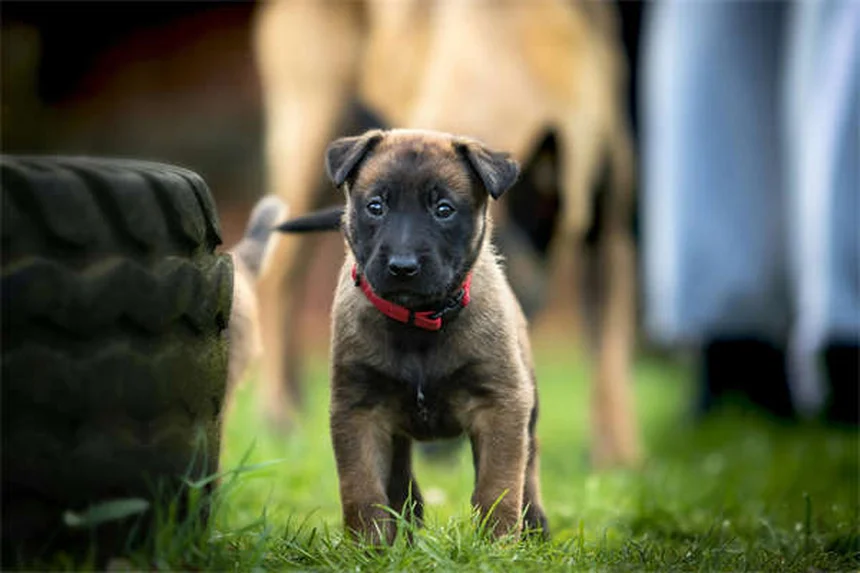Is a Christmas cactus poisonous to cats? The answer is: mostly no, but with some important cautions. While the Christmas cactus isn't highly toxic to your feline friends, it can still cause some unpleasant digestive issues if they decide to make a snack out of it. I've had my share of panicked moments when I caught my cat Oliver nibbling on houseplants, so I completely understand your concern.Here's what you need to know: If your cat takes a small bite, they might experience mild vomiting or diarrhea - nothing too serious. But if they go to town on the whole plant? That's when we start worrying about potential blockages. The good news is, unlike those dangerous lilies everyone warns about, the Christmas cactus won't send your kitty into kidney failure. Phew!In this guide, we'll walk through everything from symptoms to watch for to how to cat-proof your holiday decorations. I'll share some hard-earned tips from my years of balancing a love for plants with keeping three curious cats safe. Because let's face it - telling a cat no is about as effective as telling snow not to be cold!
E.g. :Cat Nosebleeds: Causes & Emergency Care for Feline Epistaxis
Advertisement
- 1、Is Your Christmas Cactus a Danger to Your Cat?
- 2、What Happens If Your Cat Takes a Bite?
- 3、Creating a Cat-Safe Holiday Home
- 4、The Bigger Picture: Holiday Hazards
- 5、Final Thoughts on Keeping Kitty Safe
- 6、Beyond the Christmas Cactus: Other Holiday Plants to Consider
- 7、The Science Behind Plant Toxicity
- 8、Holiday Safety Beyond Plants
- 9、Making Your Home Safe Without Sacrificing Style
- 10、When Accidents Happen: Being Prepared
- 11、FAQs
Is Your Christmas Cactus a Danger to Your Cat?
Let's Talk About That Festive Plant
You know that gorgeous Christmas cactus brightening up your living room? The one with those vibrant red and pink flowers that just scream holiday cheer? Well, I've got good news and some things to watch out for when it comes to your curious feline friends.
While the Christmas cactus (Schlumbergera bridgesii) isn't the most dangerous plant in your home, it's not exactly cat candy either. Here's the deal: If your cat takes a nibble, they might experience some tummy troubles. We're talking vomiting, diarrhea, or just generally feeling blah. But before you panic, let me put your mind at ease - this plant won't send your kitty to the emergency room unless they decide to make a salad out of it.
Why Cats Find Plants Irresistible
Ever wonder why your cat seems drawn to your plants like a moth to a flame? It's in their nature! Cats are curious creatures, and those dangling stems look like perfect playthings. Plus, some experts think they might nibble on plants to help with digestion or just because they're bored.
Here's a quick comparison of holiday plants and their effects on cats:
| Plant | Toxicity Level | Common Symptoms |
|---|---|---|
| Christmas Cactus | Mild | Vomiting, diarrhea |
| Lilies | Severe | Kidney failure |
| Poinsettia | Very Mild | Drooling, nausea |
What Happens If Your Cat Takes a Bite?
 Photos provided by pixabay
Photos provided by pixabay
The Immediate Effects
Picture this: You're sipping eggnog when you catch Mittens chomping on your Christmas cactus. What now? First, don't freak out. The worst you'll likely see is some vomiting or diarrhea. The plant's fibrous material can irritate their digestive system, but it's usually not serious.
But here's something you might not know - did you realize that Christmas cactuses aren't actually true cacti? That's right! They don't have those scary spines that desert cacti do. So while your cat might get an upset stomach, they won't get poked by needles. That's one less thing to worry about!
When to Call the Vet
Now, here's an important question: How much is too much? If your cat just took a tiny taste, they'll probably be fine. But if they ate half the plant? That's when you'll want to call your vet or the Pet Poison Helpline at 1-855-764-7761.
Watch for these signs that mean business: continuous vomiting, refusing to eat, or acting super lethargic. These could signal a blockage, which needs immediate attention. Remember, you're the best judge of your cat's normal behavior - if something seems off, trust your gut.
Creating a Cat-Safe Holiday Home
Plant Placement Matters
Let's be real - telling a cat not to explore is like telling snow not to be cold. It's just not happening. So instead of fighting nature, work with it. Put your Christmas cactus up high where kitty can't reach, maybe on a shelf or in a hanging planter.
Here's a pro tip: Cats hate certain smells. Try placing citrus peels or aluminum foil around your plants - most cats will steer clear. Or better yet, create a distraction with some new toys to keep those paws busy!
 Photos provided by pixabay
Photos provided by pixabay
The Immediate Effects
Why risk it when there are so many pet-safe alternatives? Consider these options:
- Fake plants that look just as festive
- Pinecone arrangements (just no glitter!)
- Cat grass grown specifically for nibbling
I've found that my cats completely ignore the decorations when I give them their own "plant" to enjoy. It's like giving a toddler their own toy so they'll leave your stuff alone - works like a charm!
The Bigger Picture: Holiday Hazards
More Dangerous Than Christmas Cactus
While we're talking holiday plants, let's address the elephant in the room - lilies. These beautiful flowers are like kryptonite for cats. Even a little pollen can cause kidney failure. That's why I always tell my friends: if you have cats, skip the lilies completely.
Other plants to watch out for include mistletoe (can cause heart issues) and holly (upsets stomachs). The Christmas cactus is practically harmless compared to these guys!
Unexpected Dangers
Here's something most people don't think about - Christmas tree water. That stuff can grow bacteria or contain fertilizers that make cats sick. And tinsel? That shiny stuff is basically cat crack, but it can cause serious intestinal blockages if swallowed.
My rule of thumb? If it's small enough to fit in a cat's mouth, assume they'll try to eat it. I learned this the hard way when my cat Oliver decided a ornament hook looked tasty. Not a fun vet visit.
Final Thoughts on Keeping Kitty Safe
 Photos provided by pixabay
Photos provided by pixabay
The Immediate Effects
If your cat did sample your Christmas cactus, here's what to do: First, check how much is missing. Then watch your cat like a hawk for the next 24 hours. Most symptoms will show up within a few hours if they're going to appear at all.
Keep water available and maybe offer some bland food like boiled chicken if they seem interested. But if they're not back to normal within a day, or if symptoms get worse, don't hesitate to call your vet.
Enjoying the Holidays Stress-Free
The holidays should be fun, not stressful! With a few simple precautions, you can have both beautiful decorations and a healthy, happy cat. I like to think of it as cat-proofing, just like you'd baby-proof for a toddler.
Remember, the Christmas cactus is low on the worry scale. Focus your energy on the real dangers like lilies and tinsel, and you'll all have a wonderful, safe holiday season. Now go enjoy that eggnog (just don't share with kitty - alcohol is a big no-no for cats)!
Beyond the Christmas Cactus: Other Holiday Plants to Consider
The Surprising Benefits of Holiday Plants
Did you know that many holiday plants actually improve indoor air quality? While we're worrying about our cats, we often forget that these festive greens are working hard to clean the air we breathe. The Christmas cactus, for instance, helps remove volatile organic compounds (VOCs) from your home environment.
Here's a fun fact that might surprise you: NASA studied houseplants for their air-purifying abilities back in the 1980s! While Christmas cactuses weren't part of that study, many of their relatives made the list. Who knew your holiday decor could double as an air filter?
Creating a Cat-Friendly Holiday Garden
Why not give your feline friend their own safe plants to enjoy? Cat grass (usually wheatgrass or oatgrass) is easy to grow and provides nutrients and fiber. You can find kits at most pet stores that include everything you need.
I've discovered that when I give my cats their own plants, they're much less interested in my decorations. It's like having a decoy! Plus, watching them nibble on their special grass is way cuter than worrying about them getting into trouble.
The Science Behind Plant Toxicity
Why Some Plants Are More Dangerous Than Others
Ever wonder what makes certain plants toxic while others are harmless? It all comes down to chemical compounds. Lilies, for example, contain alkaloids that attack a cat's kidneys. Christmas cactuses, on the other hand, just have irritating fibers that upset stomachs.
Here's something fascinating: Many plants developed these toxins as natural defenses against being eaten by animals in the wild. Our housecats just didn't get the memo that these pretty plants might make them sick!
How Cats Process Plant Materials
Cats lack certain digestive enzymes that help break down plant matter efficiently. That's why even non-toxic plants can cause stomach upset. Their systems are designed for meat, not salad!
When my vet explained this to me, it completely changed how I view my cats' plant-chewing habits. Now I understand why they sometimes throw up after eating grass - their bodies just aren't built to handle it well.
Holiday Safety Beyond Plants
Decorations That Pose Hidden Risks
While we're focused on plants, let's not forget about other holiday hazards. Those shiny ornaments? Potential choking hazards. Electrical cords? Chewing temptations. Even scented candles can cause problems if knocked over by curious paws.
I learned this lesson the hard way when my cat knocked over a candle (luckily I was right there to catch it). Now I use battery-operated flameless candles - they look just as nice without the fire risk!
Food Dangers During the Holidays
The holiday season means lots of special foods around the house. But many human treats are dangerous for cats. Chocolate, onions, garlic, and alcohol should all be kept far away from curious noses.
One year, my cat stole a piece of chocolate-covered cherry right off the coffee table. That was an expensive emergency vet visit! Now I'm extra careful to keep all human treats securely stored.
Making Your Home Safe Without Sacrificing Style
Creative Solutions for Plant Lovers
If you can't imagine the holidays without plants but worry about your cat, consider terrariums or glass cloches. These let you enjoy greenery while keeping it safely out of reach. Plus, they look incredibly elegant!
I've started collecting vintage glass containers for this very purpose. My favorite is an antique apothecary jar that perfectly fits a small poinsettia - beautiful to look at and 100% cat-proof.
Training Your Cat to Avoid Plants
Believe it or not, you can teach cats to leave plants alone! Using positive reinforcement (treats for ignoring plants) and deterrents (like citrus sprays), many cats learn what's off-limits.
It took patience, but my cats now understand that plants on high shelves aren't for them. They get special treats when they walk past without showing interest. Who says you can't train a cat?
When Accidents Happen: Being Prepared
Creating a Pet First Aid Kit
Every pet owner should have a basic first aid kit ready, especially during the holidays when risks increase. Include items like hydrogen peroxide (for inducing vomiting if directed by a vet), gauze, and your vet's emergency number.
I keep mine in a bright red box under the kitchen sink - easy to find in a panic. After that chocolate incident, I also added activated charcoal capsules, which can help absorb toxins.
Knowing the Signs of Trouble
Beyond vomiting and diarrhea, watch for these less obvious signs of plant poisoning: excessive drooling, pawing at the mouth, or sudden changes in behavior. Cats are masters at hiding discomfort, so subtle changes matter.
My rule is simple: When in doubt, call the vet. I'd rather be that slightly paranoid pet parent than risk my cat's health. Most vets would agree - they'd much rather answer a quick question than deal with an emergency later!
E.g. :My cat ate my Christmas Cactus, any advice to help it? : r/cactus
FAQs
Q: How toxic is Christmas cactus to cats?
A: Christmas cactuses are considered mildly toxic to cats. While they won't cause life-threatening poisoning like lilies can, they can still irritate your cat's digestive system. The main concern is the plant's fibrous material, which can lead to vomiting, diarrhea, or in rare cases, intestinal blockage if large amounts are eaten. I always tell my friends - it's not the most dangerous plant, but it's not cat food either! The ASPCA lists it as non-toxic, but many vents report cases of stomach upset, so it's best to play it safe.
Q: What should I do if my cat eats Christmas cactus?
A: First, don't panic! Assess how much they've eaten. If it's just a nibble, monitor for symptoms like vomiting or lethargy. Offer small amounts of water and bland food. But if they've eaten a significant amount or show concerning symptoms, call your vet or the Pet Poison Helpline immediately. Pro tip: Keep the plant's scientific name (Schlumbergera bridgesii) handy when you call - it helps the experts give you the best advice. And whatever you do, don't try to induce vomiting at home - that's a job for professionals.
Q: How can I keep my cat away from Christmas cactus?
A: As any cat owner knows, keeping them away from anything is half the battle! I've found success with these strategies: Place the plant up high (cats are less likely to jump for things they can't see), use citrus peels around the base (most cats hate the smell), or provide alternative plants like cat grass. My personal favorite trick? A decoy plant - I keep a pot of cat grass right next to my "forbidden" plants, and my cats usually choose the grass!
Q: What holiday plants are more dangerous than Christmas cactus?
A: While Christmas cactus is relatively low-risk, several holiday favorites are extremely dangerous to cats. Lilies top the list - even small amounts of pollen can cause kidney failure. Mistletoe and holly can cause serious heart and digestive issues. Poinsettias, while not as toxic as once believed, can still cause mouth irritation and vomiting. I always recommend checking the ASPCA's toxic plant list before bringing any new plants home during the holidays.
Q: How long after eating Christmas cactus will symptoms appear?
A: If your cat is going to show symptoms from eating Christmas cactus, they'll typically appear within 2-6 hours. Most cases involve vomiting first, followed by diarrhea if the irritation continues. The good news? Symptoms usually resolve within 24 hours if it's just a small amount. But here's something many people don't realize - sometimes cats will seem fine at first but develop symptoms later, so it's important to monitor them for a full day after ingestion.


